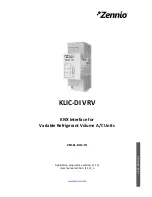
Instruction Manual
D200160X012
4195K Controllers
July 2018
38
Figure 4‐6. Fisher 4195KC Controller Schematic
SET POINT
INDICATOR
PROCESS POINTER
REMOTE SET POINT
CONNECTED HERE
INPUT ELEMENT
CONNECTED HERE
CONNECTING
LINK
BEAM
FLAPPER
NOZZLE
PROPORTIONAL
BELLOWS
RESET BELLOWS
PROPORTIONAL
BAND ADJUSTMENT
SUPPLY
PRESSURE
RELAY
OUTPUT PRESSURE
TO FINAL CONTROL
ELEMENT
REVERSE ACTION
QUADRANT
FLAPPER
PIVOT
FEEDBACK
LINK
FEEDBACK
MOTION
DIRECT ACTION
QUADRANT
INPUT MOTION
FLAPPER DETAIL
SUPPLY PRESSURE
OUTPUT PRESSURE
NOZZLE PRESSURE
RESET PRESSURE
RELAY
TO
NOZZLE
TO
RESET
BELLOWS
TO
PROPORTIONAL
BELLOWS
DIFFERENTIAL
RELIEF VALVE
SUPPLY
PRESSURE
OUTPUT
PROPORTIONAL‐PLUS‐RESET‐PLUS‐RATE CONTROL
PROPORTIONAL‐PLUS‐RESET‐PLUS‐RATE CONTROL
WITH ANTI‐RESET WINDUP
46A9764‐B
C0593‐3
PROPORTIONAL PRESSURE
RATE VALVE
RESET VALVE
RATE VALVE
RESET VALVE
The proportional band adjustment positions the nozzle on the flapper. Increasing (widening) the proportional band
moves the nozzle to a position on the flapper where less input and more feedback motion occurs, which decreases the
gain of the controller. Decreasing (narrowing) the proportional band moves the nozzle toward a position where more
input and less feedback motion occurs, which increases the gain. The controller action is changed from direct to
reverse by turning the proportional band adjustment to position the nozzle on the flapper quadrant to a point where
the direction of the flapper motion versus input motion is reversed as shown in the flapper detail of figure 4‐5 or 4‐6.
With the controller in the reverse‐acting mode, an increase in process pressure causes a decrease in output pressure.
















































